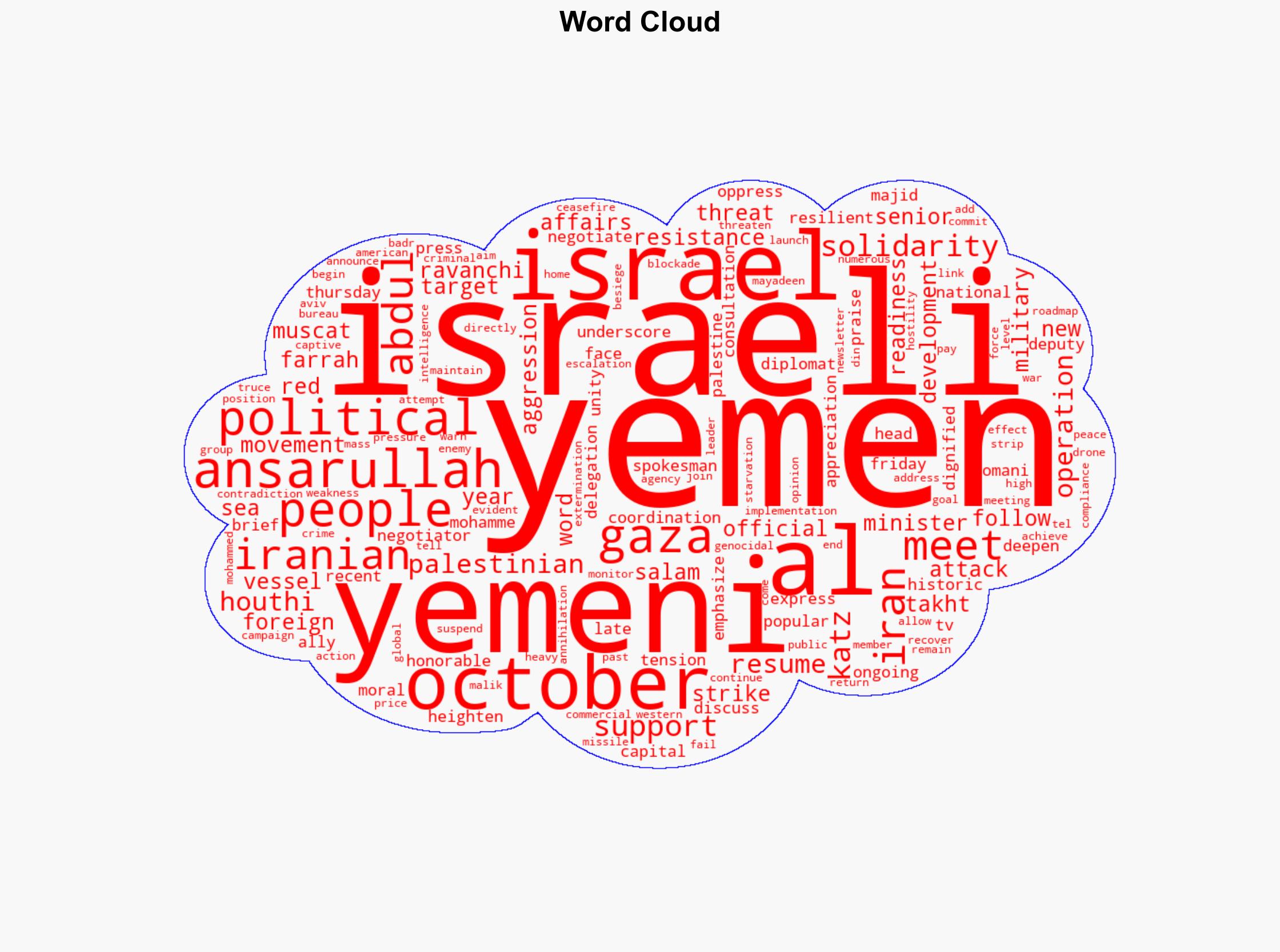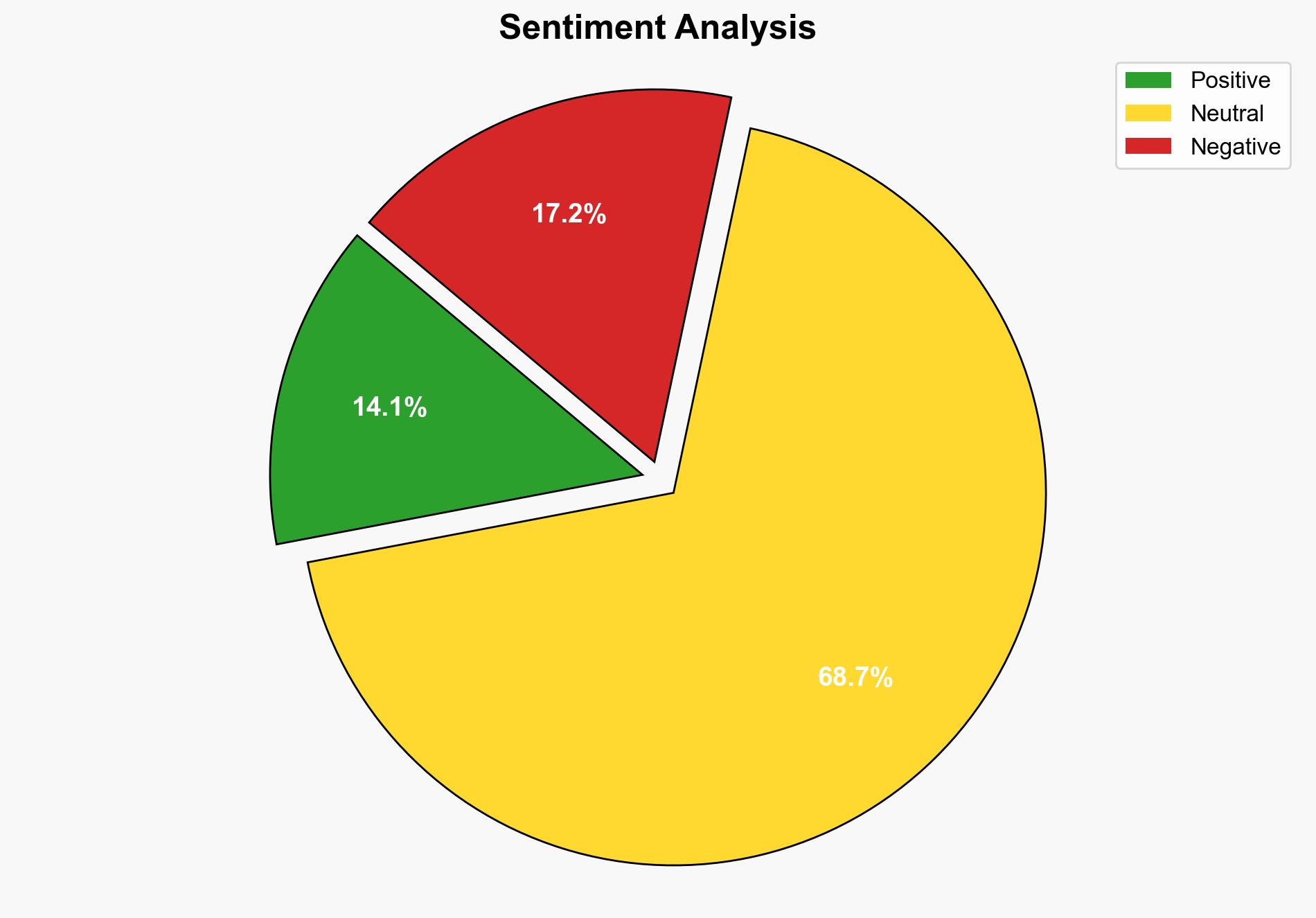Senior Yemeni Iranian officials meet in Muscat amid new Israeli threats – Globalsecurity.org
Published on: 2025-11-01
Intelligence Report: Senior Yemeni Iranian officials meet in Muscat amid new Israeli threats – Globalsecurity.org
1. BLUF (Bottom Line Up Front)
The meeting between Yemeni and Iranian officials in Muscat likely aims to strengthen strategic coordination in response to Israeli threats, with a moderate confidence level that this is primarily a defensive alignment. The most supported hypothesis suggests that the meeting is a preparatory measure for potential escalations in the region. It is recommended to enhance monitoring of regional military activities and diplomatic communications to anticipate shifts in alliances and potential conflict triggers.
2. Competing Hypotheses
1. **Defensive Coordination Hypothesis**: The meeting is primarily intended to deepen defensive coordination between Yemen and Iran in response to perceived Israeli threats. This hypothesis is supported by the emphasis on solidarity and resilience against foreign aggression, as well as the historical context of mutual support against common adversaries.
2. **Offensive Strategic Planning Hypothesis**: Alternatively, the meeting could be part of a broader offensive strategy to plan coordinated actions against Israeli interests, possibly leveraging the ongoing tensions in Gaza as a catalyst. This is suggested by the discussions on recent political developments and the potential for resumed operations if hostilities continue.
Using ACH 2.0, the Defensive Coordination Hypothesis is better supported due to the explicit references to defensive readiness and the historical context of defensive posturing by both parties.
3. Key Assumptions and Red Flags
– **Assumptions**: It is assumed that both parties are primarily motivated by defensive concerns rather than offensive ambitions. The assumption that Israeli threats are the primary catalyst for the meeting could overlook internal political dynamics within Yemen and Iran.
– **Red Flags**: The lack of detailed information on the specific outcomes of the meeting raises questions about potential undisclosed agreements. The reliance on statements from state-affiliated media sources could introduce bias.
– **Blind Spots**: There is limited insight into the internal decision-making processes within the Yemeni and Iranian leadership that could influence their strategic priorities.
4. Implications and Strategic Risks
– **Potential Escalation**: Increased coordination between Yemen and Iran could lead to heightened tensions with Israel, potentially escalating into broader regional conflicts.
– **Geopolitical Shifts**: Strengthened alliances may alter power dynamics in the Middle East, affecting U.S. and allied interests in the region.
– **Economic Impact**: Disruptions in the Red Sea shipping lanes could have significant economic repercussions, affecting global trade routes.
– **Cyber Threats**: Enhanced coordination may include cyber capabilities, posing risks to critical infrastructure.
5. Recommendations and Outlook
- Enhance intelligence collection on military movements and communications between Yemen, Iran, and their allies.
- Engage in diplomatic efforts to de-escalate tensions and encourage dialogue between conflicting parties.
- Prepare for potential economic disruptions by securing alternative trade routes and strengthening cybersecurity defenses.
- Scenario Projections:
- Best Case: Diplomatic interventions lead to de-escalation and renewed peace talks.
- Worst Case: Military confrontations escalate, affecting regional stability and global markets.
- Most Likely: Continued low-level tensions with periodic escalations and diplomatic stalemates.
6. Key Individuals and Entities
– Mohammed Abdul Salam
– Majid Takht Ravanchi
– Israel Katz
– Mohammed Al Farrah
– Abdul Malik Badr Al Din Al Houthi
7. Thematic Tags
national security threats, cybersecurity, counter-terrorism, regional focus





